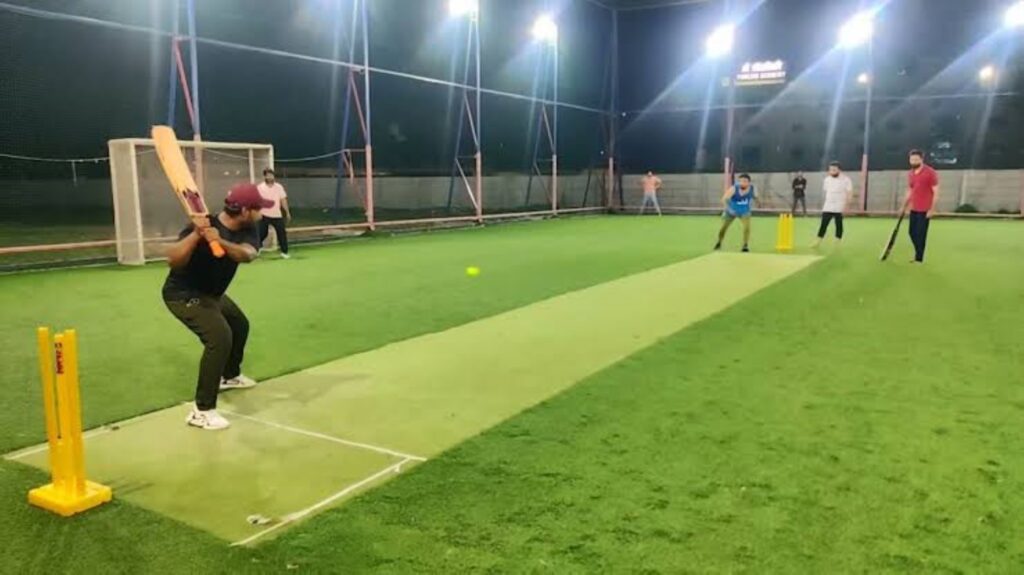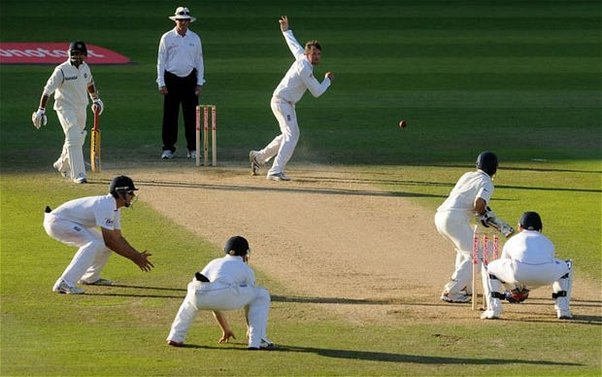Box vs Traditional Cricket, In box cricket, players complete in a smaller, enclosed area where walls affect the ball’s bounce and direction, speeding up and compacting the game. In traditional cricket, players use larger, open fields with standard boundaries and pitch dimensions, allowing them to execute more varied shots and employ more strategic play. Box cricket teams typically consist of fewer players, and the game is shorter with simplified rules. In contrast, traditional cricket matches last longer, feature complex rules, and emphasize technique and strategy.
Box Cricket

Traditional Cricket

1.Playing area
- Traditional Cricket: Played on a large, oval or rectangular field with a standard pitch length of 22 yards (20.12 meters). The field size and dimensions vary widely.
- Box Cricket: Played in a much smaller, enclosed area, such as a backyard, indoor court, or urban space. The pitch length is significantly shorter, often 6-15 feet, and boundaries are closer.
2. Team Size
- Traditional Cricket: Each team typically consists of 11 players.
- Box Cricket: Teams usually have 6-8 players per side, making it more suitable for smaller groups and tighter spaces.
3. Pitch and Wickets
- Traditional Cricket: Uses a 22-yard pitch with three stumps at each end.
- Box Cricket: Features a shorter pitch, and wickets may be standard or improvised (e.g., plastic bottles). The distance between wickets is reduced to fit the smaller space.
4. Ball
- Traditional Cricket: Uses a hard leather cricket ball.
- Box Cricket: Typically uses a tennis ball or a softer cricket ball to reduce risk and accommodate the smaller playing area.
5. Bowling Style
- Traditional Cricket: Bowlers deliver the ball from a full run-up, and both overarm and underarm deliveries are permitted (overarm is standard).
- Box Cricket: Bowling can be from a shorter run-up, and both underarm and overarm deliveries are often allowed, depending on the local rules. The pace is usually slower due to the confined space.
6. Batting and Scoring Box vs Traditional cricket
- Traditional Cricket: The ball is hit and runs are scored by running between the wickets or hitting boundaries. The fielding setup is spread out more.
- Box Cricket: Players also score runs by hitting the ball and running, but the boundaries are closer. They can score runs by hitting the ball over or into designated areas. The fielding positions adapt to the smaller area.
7. Game Duration
- Traditional Cricket: Matches can last from one day (One Day Internationals) to five days (Test matches), with varying lengths.
- Box Cricket: Games are generally shorter, often consisting of 6-10 overs per side, making them more suitable for quick play.
8. Fielding Positions Box vs Traditional cricket
- Traditional Cricket: Has a wide range of fielding positions spread across the large field, including slips, gully, and long-off.
- Box Cricket: Due to the smaller size, fielding positions are much closer to the batsman. Some positions might be eliminated or adjusted to fit the space.
9. Rules and Regulations Box vs Traditional cricket
- Traditional Cricket: A detailed set of international rules and regulations, including specific codes of conduct and procedures, governs us.
- Box Cricket: Rules can be more flexible and adapted based on the local setup. Common adaptations include changes in scoring methods and rules for getting out.
10. Accessibility and Equipment Box vs Traditional cricket
- Traditional Cricket: Requires a large field and full cricket gear, including pads, helmets, and protective clothing.
- Box Cricket: Box cricket requires less space and equipment, making it more accessible and affordable. Players can choose to wear protective gear, though it is optional, but recommended.
11. Social and Recreational Aspects
- Traditional Cricket: Often played in formal settings, including professional and amateur leagues, with structured competitions.
- Box Cricket: Generally more informal and recreational, making it a popular choice for casual play and social gatherings.
In summary, box cricket to fit smaller, confined spaces with fewer players and simplified rules. It offers a quicker and more accessible way to enjoy cricket, particularly in urban environments or areas with limited space.
